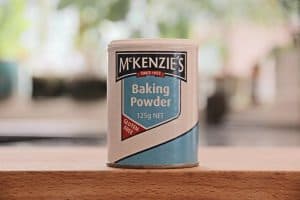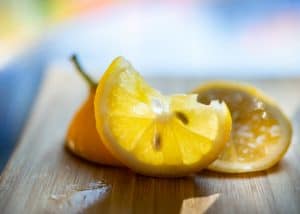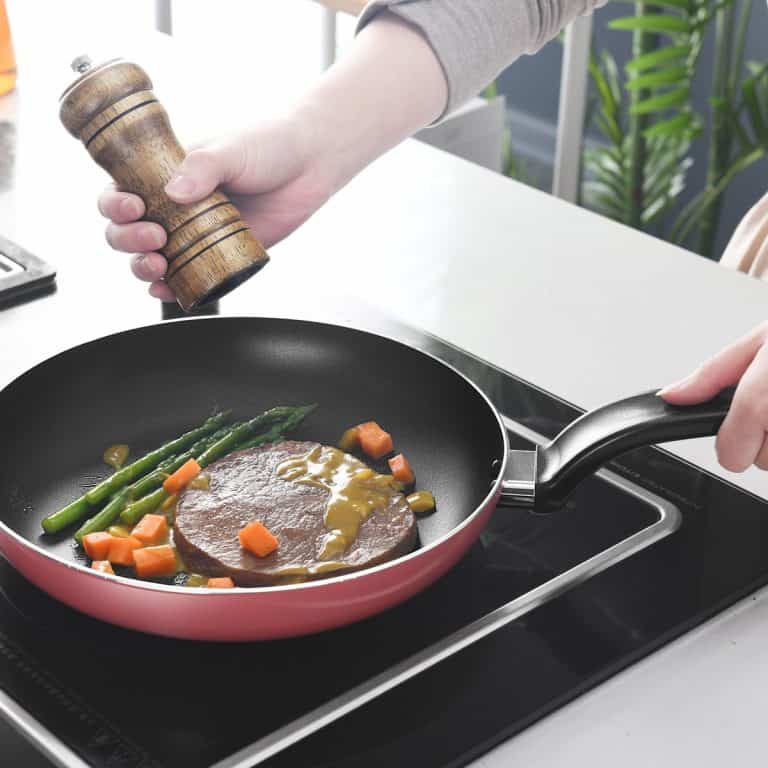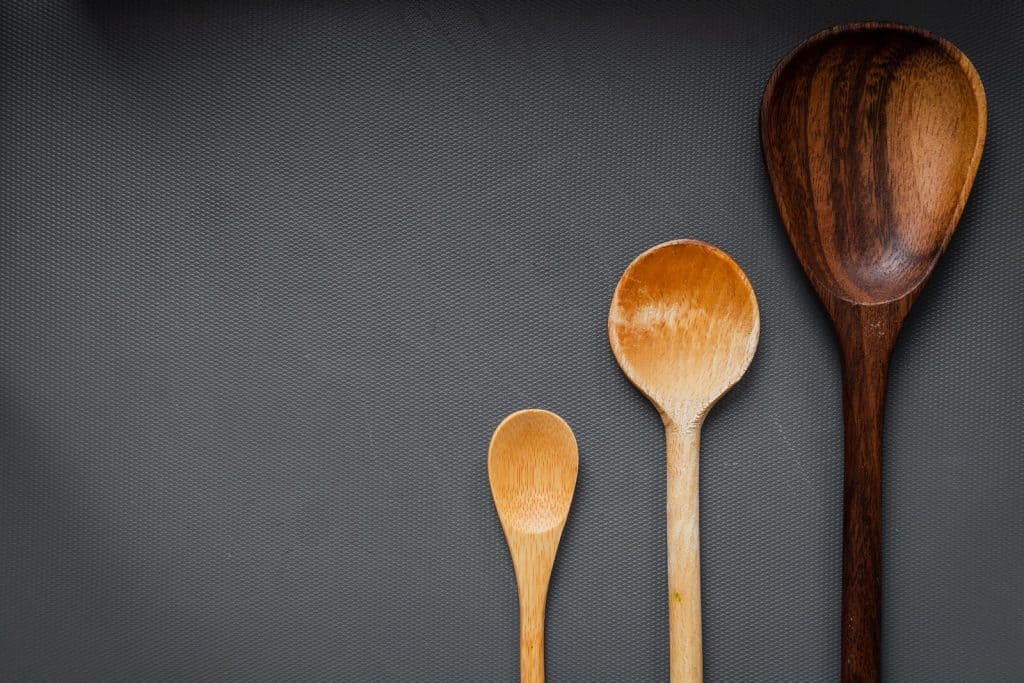Non stick pans are a popular kitchen item for good reason – they make cooking much simpler. However, over time they can become dirty and stained, making them less effective. If your nonstick pan is starting to look a bit worse for wear, don’t worry – there are several easy ways how to clean non stick pan and make it look new again.
Tips and Tricks on How to Clean Non-Stick Pan
Here are some cleaning tips for cleaning non-stick pans:
1) Cleaning Non-Stick Pans with Baking Soda and Vinegar

One of the simplest ways to clean a nonstick pan is to use a mixture of baking soda and vinegar.
Baking soda is a natural cleanser and deodorizer, while vinegar is a powerful disinfectant. Together, they make a great team for cleaning your nonstick pan.
To do this, simply mix equal parts baking soda and vinegar together in a bowl, then apply it to the pan with a soft sponge or cloth. Rub the mixture into the stained areas of the pan, then rinse it off with warm water.
If you have tough burnt-on food, make a paste of baking soda and vinegar and let it sit on the pan for 15 minutes before scrubbing. For an extra-shiny finish, buff the clean pan with a dryer sheet.
This method is also effective for removing rust from knives and other metal surfaces. Just remember that after cleaning with vinegar, you should always rinse the pan thoroughly with water to remove any traces of acidity.
2) Use Dish Soap and Baking Soda
If the vinegar and baking soda method doesn’t seem to be doing the trick, you can try using dish soap and baking soda instead.
To do this, mix together a paste of dish soap and baking soda, then apply it to the pan and scrub with a soft sponge or brush. Rinse it off with water when you’re done.
This method is especially effective for removing tough grease and grime. Dish soap is also a good choice for cleaning pans with non-stick coatings, as it’s gentle enough to not damage the coating.
Dish soap can leave a residue if used too frequently, so rinse the pan thoroughly after cleaning. If you don’t have dish soap, you can also use liquid laundry detergent.
3) Use Ammonia
If you have a filthy pan, you may need to resort to using ammonia. This powerful cleaning agent will cut through the toughest grease and grime.
To use this method, simply mix equal parts of water and ammonia in a bowl, then apply it to the pan with a sponge or brush. Scrub the mixture into the stained areas of the pan, then rinse it off with water.
Ammonia is a harsh substance, so use this method only when necessary. Always ventilate the room well when using ammonia, and make sure to rinse the pan thoroughly afterward.
4) Use Cream of Tartar
Cream of tartar is a common ingredient in baking, but did you know it’s also great for cleaning? This powdery substance is actually an acid, which makes it great for cutting through grease and grime.
To use this method, simply mix together equal parts cream of tartar and water to form a paste, then apply it to the pan and scrub with a soft sponge or brush. Rinse it off with water when you’re done.
This method is especially effective for removing burnt-on food from your pan. Cream of tartar is also great for cleaning coffee pots and teapots.
5) Use Lemon Juice

Lemon juice is another acidic substance that can be used to clean your non stick pan. This natural cleanser will remove stains and leave your pan looking shiny and new.
To use this method, simply apply lemon juice to the stained areas or the burnt non-stick pan. Let it sit for a few minutes, then scrub it with a sponge or brush. Rinse it off with water when you’re done.
This method is also effective for cleaning stainless steel sinks and countertops.
What to Do if Your Nonstick Pan Sticks and Doesn’t Come Off
If your nonstick pan starts to stick and doesn’t come off, don’t panic! There are a few simple steps you can take to get it unstuck.
1) Heat Up the Pan
The first thing you should do is heat up the pan. This will help loosen the food particles and make them easier to remove.
Place the pan on the stove over medium heat and let it cook for a few minutes. Once the pan is hot, use a spatula or spoon to scrape off the stuck food.
If the food still doesn’t come off, you can try using a little cooking oil to help loosen it. Simply add a teaspoon of oil to the pan and heat it up for a minute or two. Then, use a spatula or spoon to scrape off the food.
If all else fails, you can try soaking the pan in hot water for a few minutes. This will help loosen any stubborn food particles.
Once the food is removed, be sure to wash the pan with soap and water to remove any oil residue.
2) Use Baking Soda
If the pan is still sticking, you can try using baking soda. This common household ingredient is great for removing stuck-on food.
To use this method, simply make a paste of baking soda and water. Apply the paste to the stained areas of the pan and let it sit for a few minutes. Then, use a sponge or brush to scrub off the food.
How to Prevent Non-Stick cookware from Scratches
There are a few things you can do to prevent your non-stick cookware from scratching.
1) Use a Silicone Spatula
A silicone spatula is a great tool for cooking with non-stick cookware, as it won’t scratch the surface. Be sure to avoid using metal spatulas or knives, as these can damage the non-stick coating.
2) Use Wooden Utensils
Wooden utensils are another great option for cooking with non-stick cookware. They won’t scratch the surface and can help prevent sticking. Non-stick pans are especially vulnerable to damage from metal utensils.
3) Use Hot Water and Soap
If you do need to use a metal utensil, be sure to use hot water and soap. This will help remove any particles that could scratch the surface.
Cooking utensils aren’t the only things that can scratch your non-stick cookware. Be sure to avoid using abrasive cleaners, as these can damage the coating.
4) Use a Soft Cloth
To clean your non-stick cookware, be sure to use a soft cloth. This will help prevent any scratches.
If you do notice any scratches on your cookware, don’t worry! These can usually be removed with a little elbow grease and a non-abrasive cleaner.
Additional Tips for Taking Care of Your Non-Stick Pans
1) Season nonstick cookware before using it for the first time.
Doing this will help create a barrier between the nonstick surface and the food.
To season your pan, simply coat it with a light layer of oil and heat it over medium heat for a few minutes.
Repeat this process a few times before use to ensure the best results.
2) Use nonstick cookware at the right temperature.
Nonstick cookware is designed for cooking at lower temperatures. Be sure to avoid using high heat, as this can damage the coating.
If you do need to use high heat, be sure to use non-stick cooking sprays. This will help protect the pan from scratches.
4) Avoid using steel wool or abrasive cleaners.
Non-stick surfaces are easily scratched. Be sure to avoid using steel wool, abrasive cleaners, or stiff scrubbing brushes, as these can damage the coating. Stick to using soft cloths and non-abrasive cleaners for best results.
5) Keep and store the pans properly.
Be sure to keep and store your non-stick cookware in a cool, dry place. Avoid stacking the pans, as this can cause scratches.
6) To remove burnt food, soak the pan in warm water.
If you’ve accidentally burnt food, don’t worry! Burnt pots can usually be saved.
To remove the burnt food, simply soak the pan in warm water for a few minutes. Then, use a spatula or spoon to scrape off the food.
Caring for your non-stick cookware doesn’t have to be difficult. By following these simple tips, you can keep your pans looking like
With a little care and attention, your nonstick cookware will last for years to come! Just be sure to follow the tips above to keep it in good condition.



